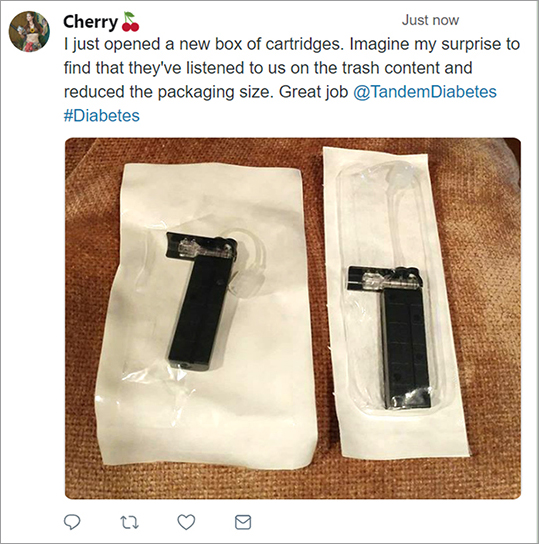Every day, Tandem insulin pump users are doing their part to reduce, reuse, and recycle. Having chosen the only rechargeable insulin pumps on the market, we estimate that our customers have kept over 8.7 million disposable batteries out of landfills
since our pumps became available in 2012.1 Over the life of their pumps, together these users will save over 18.4 million batteries. That's almost $16.2 million dollars saved already, and over $34.3 million our users won't spend
on batteries over the lifetime of their pumps.2
Batteries use chemical reactions to store and produce energy. Unfortunately, many of the chemicals used in these reactions, if improperly discarded, can harm the environment. Despite recycling programs around the country, the Environmental Protection
Agency estimates that Americans throw away billions of disposable batteries each year.
Rechargeable batteries like those used in Tandem insulin pumps have a much smaller environmental footprint thanks to their reusability.
Not only do they last longer over time, but also – thanks to trade-in programs for the high-tech devices that use these batteries – the heavy metals find their way into landfills less often than their disposable counterparts.
Historically, insulin pump upgrade programs have required a physical exchange of hardware. Thanks to our Tandem Device Updater, over 100,000 Tandem pumps have been remotely updated with new pump software and features worldwide. That means almost 60,000 fewer screens, batteries, and circuit boards are produced, and 200,000
fewer UPS shipments are made to keep Tandem customers outfitted with the newest technology. Additionally, remote updates can be made from the comfort of home, all without interrupting therapy.
In 2019, we were able to make some adjustments to our cartridge packaging, which reduced the size of each Tyvek pouch. We loved hearing from our customers who noticed and appreciated this change.


At Tandem, we also have several ongoing recycling programs where we work with vendors who specialize in e-waste, used medical sharps, and each waste material used to make our pumps and cartridges (including alkaline batteries, lithium batteries, plastics
and metals).3
Instead of contributing to the problem, the good news is that we can all make a difference right now by replacing single-use batteries with the recyclable, rechargeable kind. By using rechargeable batteries, you not only save money, but also ensure
that fewer batteries get into landfills.
Additional reading:
1 Estimation since Aug 31, 2012 , as of December 31, 2020, assuming 20-day battery life of disposable batteries when used in other insulin pumps. Data on file.
2 Calculation uses $7.47 for a 4-pack of batteries.
3 Medical waste is incinerated, not recycled.